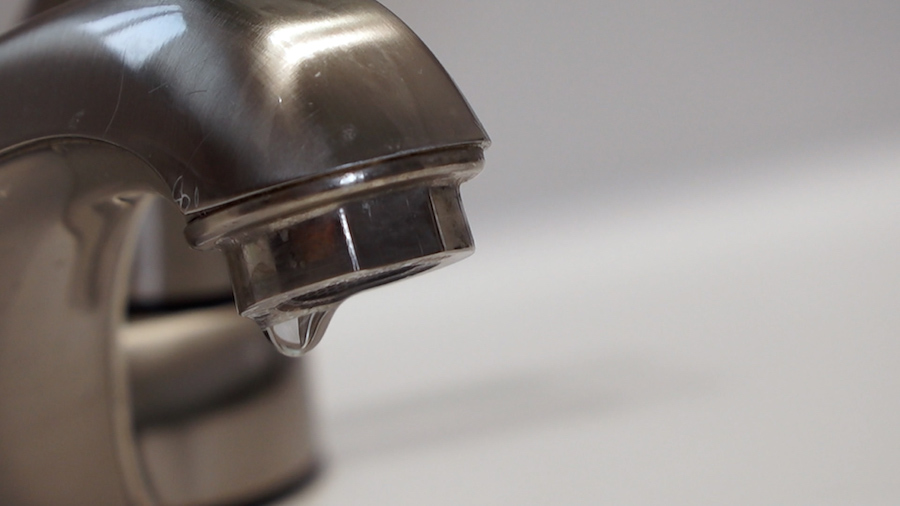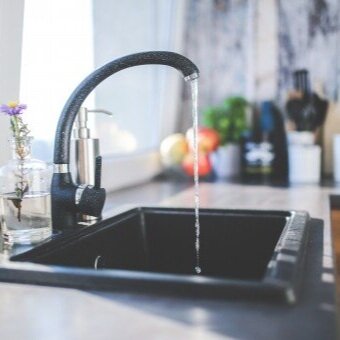When Busted Faucets Ought to Be Addressed Swiftly
When Busted Faucets Ought to Be Addressed Swiftly
Blog Article
They are making several good pointers on the subject of Potential Health Risks Associated With Leaky Faucets as a whole in this article down the page.

Intro
A dripping tap could feel like a small aggravation, yet its effects expand much past the occasional drip. Understanding the effects of a leaky faucet is crucial for both homeowners and the environment. In this article, we'll explore the numerous influences of this usual family problem and why addressing it quickly is important.
Causes of Leaky Faucets
Leaky taps can result from a variety of factors, consisting of damage, high water stress, and corrosion. Over time, the constant use faucets can result in worn-out seals and gaskets, creating leakages to develop. Additionally, too much water stress can put pressure on plumbing fixtures, leading to leakages. Rust and rust can also damage faucet components, making them vulnerable to leakage.
Water Wastage
Among the most significant effects of a leaking tap is water waste. Even a tiny drip can add up to gallons of drainage in time. This not just drives up water bills yet also adds to water shortage and ecological deterioration. Addressing dripping faucets without delay is important for conserving this valuable resource and lessening its impact on the world.
Financial Influence
In addition to drainage, leaking taps can also have a substantial financial influence. Increased water expenses are a direct repercussion of water wastefulness, costing home owners hundreds of bucks annually. Additionally, the expense of fixing water damage brought on by leaks can be significant, specifically if left unattended for an extensive period.
Ecological Influence
The environmental effect of dripping faucets extends past water wastefulness. By conserving water, home owners can contribute to more comprehensive initiatives to reduce water deficiency and protect natural ecosystems. Lasting options such as rainwater harvesting and water-efficient components can further reduce the ecological impact of house water use.
Technical Solutions
Innovations in modern technology have brought about the development of smart faucets and water-saving gadgets that aid lessen water wastefulness. Smart taps use sensors to identify motion and adjust water flow appropriately, minimizing waste without compromising ease. Water-saving tools such as aerators and low-flow showerheads are additionally reliable in preserving water without compromising performance.
Global Perspectives
While leaky taps might feel like a local concern, they add to wider worldwide difficulties such as water shortage and climate modification. In regions already facing water stress, every drop counts, making leakage avoidance and repair service necessary. By embracing water-saving practices and buying lasting modern technologies, house owners can play their component in attending to these pressing global issues.
Governing Procedures
Federal government policies play an essential role in mitigating the influence of leaking faucets and promoting water preservation. From developing codes that call for water-efficient fixtures to water-saving incentives and discounts, policymakers have a series of tools at their disposal. By implementing and applying these guidelines, governments can ensure that home owners prioritize water preservation in their every day lives.
Neighborhood Impact
Attending to leaking taps needs collective efforts at the area level. By raising understanding about the relevance of water conservation and giving resources for leakage detection and repair, regional authorities can empower house owners to take action. Campaigns such as water-saving rebate programs and leakage detection projects can incentivize actions adjustment and promote liable water usage.
Instance Studies
Real-life examples of the influence of leaky taps underscore the value of aggressive maintenance and prompt repairs. From water damages to increasing water bills, the effects of ignoring leaks can be extreme. By sharing these case studies, home owners can much better comprehend the relevance of dealing with dripping taps immediately.
Educational Campaigns
Educational projects play an essential duty in raising understanding concerning the effects of leaking taps and advertising water conservation methods. Via workshops, seminars, and on the internet sources, home owners can discover just how to detect and repair leaks themselves. By equipping people with expertise and tools, educational campaigns can promote a society of liable water use within communities.
Health Issues
Leaky faucets can produce helpful settings for mold and mildew growth, posing health risks to residents. The existence of mold can worsen breathing problems and allergic reactions, especially in prone people. Furthermore, water damage resulting from leakages can endanger the architectural stability of structures and cause expensive repair work.
DIY vs. Professional Repair work
When faced with a dripping tap, home owners frequently discuss whether to attempt repair work themselves or hire a specialist plumber. While do it yourself repair services can save money, they might not constantly deal with the underlying issue properly. Specialist plumbing technicians have the experience and tools to identify and fix leakages appropriately, making sure long-term solutions and satisfaction for house owners.
Preventive Measures
Preventing dripping taps needs regular upkeep and positive measures. Straightforward jobs such as replacing damaged washers and seals can protect against leaks from developing. In addition, upgrading to high-quality components and decreasing water stress can assist lengthen the life expectancy of taps and lessen the threat of leaks.
Verdict
In conclusion, the results of a leaking tap extend much beyond the periodic drip. From water wastage and boosted water costs to health and wellness problems and environmental influence, the consequences of overlooking leaks can be considerable. By addressing leaking taps immediately and taking on water-saving methods, homeowners can minimize these impacts and add to a more lasting future.
Why You Shouldn’t Ignore a Leaky Faucet in Your Home
What Causes a Leaky Faucet?
Various factors can cause a leak, from loose and worn-out parts to corrosion. Your faucet has four essential components from which most plumbing issues will stem: the O-ring, the valve seat, the washer and the gasket.
What Is an O-Ring?
The O-ring is a stem screw that fastens parts of the faucet in place, preventing water from leaking out of the spout. Depending on your faucet type, the stem might have multiple O-rings. Water will drip from the faucet’s handles and base if this part breaks or deteriorates.
What Is a Valve Seat?
The valve seat controls the flow and temperature of the water. Found at the base of the handle, it works as a seal for the faucet’s stem. The valve seat ensures the water is allowed to flow or is blocked as the handles dictate. You’ll know it’s malfunctioning when water leaks from your faucet’s sides.
What Is a Gasket?
The gasket is found between the water inlet and the valve stem. It creates a seal between the faucet and the sink, holding its joints by aerators attached to the stem’s head. Water will trickle out from the base if the gasket isn’t working.
What Is a Washer?
The washer secures the handles and prevents leakage, serving a similar purpose to the O-ring. While the O-ring is ordinarily round and made from an elastic material, such as rubber, the washer is square-shaped and composed of brass, copper and other hard metals. If it malfunctions, corrodes or has been improperly installed, water will leak out of the handles, causing that incessant faucet drip.
Why Is a Leaky Faucet Dangerous?
A leaky faucet left alone for too long can have significant consequences.
Pest Infestations
Since bugs and rodents gravitate towards the scent of water, a leaky faucet will draw pests to your sink. Both are looking for leaks accessible through crawl spaces, which a faucet provides. If you leave water dripping for too long, you run the risk of an infestation.
Rust
If one of the faucet parts has started to corrode, the resulting rust can spread to your pipes and valves with startling speed. The rust might even lead to cracks or other impairments, resulting in more severe plumbing issues.
Your sink could also sustain damage from a leaky faucet. The water in your tap possesses sparse elements of calcium and iron that can stain your sink with repeated and prolonged exposure. Once those elements in the water have been open to the air for some time, your sink will start to rust, creating marks that can be difficult to remove.
https://www.tomsmechanical.com/blog/why-you-shouldnt-ignore-a-leaky-faucet-in-your-home

Do you enjoy reading about Here's How to Fix a Leaky Faucet? Try to leave feedback further down. We will be happy to see your opinions about this post. In hopes that you come back again before long. Remember to take the opportunity to share this post if you enjoyed it. We take joy in reading our article about How to Fix a Leaky Faucet.
Report this page